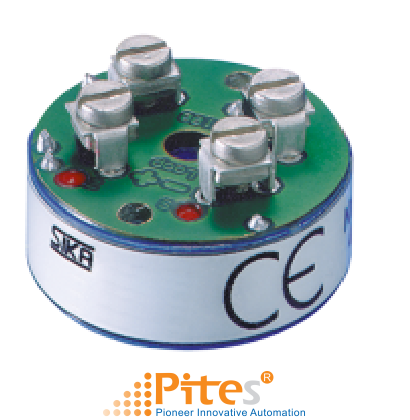
Temperature transmitter
Xuất sứ: Germany
Nhà cung cấp: Pitesco Vietnam
Areas of application
The 2-wire measuring transmitter is intended for conversion of widely varied electrical values, e.g. from a temperature sensor into an analogue standard current or voltage signal. This measuring transmitter can be used in the most varied industrial applications.
Technical features:
- High measuring accuracy
- Programmable in accordance with customer request
- Fine-tuning can be arranged by span and zero controller
Description
Application
The task of electronic transmitters is to ensure that values measured by resistance thermometers, thermocouples or other physical sensors with small output signals are transmitted and displayed without distortion. Undesired distortion due to the connecting cable is, depending on the sensor technology, generally caused by:
- The ohmic resistance of the supply line
(depending on the length, cross-section and temperature) - Parasitic thermoelectric voltages
(at terminals, when using various materials in the connecting cable) - Electromagnetic interference
(caused by machines, high- frequency transmitters, atmospheric pressure discharges, etc.)
Since the increase in interference and instabilities is directly proportional to the length of the connecting cable, the transmitter should be connected directly to the sensor output to ensure that interference to the unamplified signal is kept to a minimum. This requirement is met by so-called “head-mount transmitters”, installed in the (DIN) connection head of the sensor.
Function
Transmitters convert the sensor signal (e.g. resistance change or thermoelectric voltage) into a standardized current or voltage signal. Due to amplification, interference susceptibility is considerably reduced and the length of the cable is irrespective for signal currents. The transmitter is powered via the loop current or an external power supply unit.









